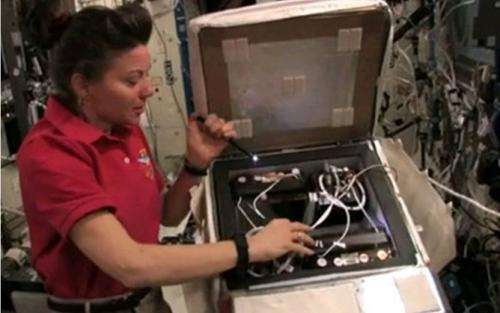Dogonauts and Persian cats: Why send animals into space?

If you believe news reports last week, Iran plans to launch a Persian cat into space in the next six months or so.
What a good idea – how about launching Australia's whole cat population on a one-way mission to nowhere! It would save millions of native animals from ending up as catfood.
That aside, sending a cat into space is not a novel idea. France planned to launch Felix the cat into space in 1963, but he escaped, so another cat – Félicette – got the gig.
And then there are dogs. The most famous dogonaut is Laika ("Barker"). She became the first animal to orbit the Earth, aboard Sputnik 2 in 1957, but she died during the flight.
Other Soviet dogonauts were luckier and returned safely to Earth. In 1960, Belka ("Squirrel") and Strelka ("Arrow"), spent a day in space accompanied by a rabbit, 42 mice, two rats and some flies. All survived.
(When I was curator of a Centenary of Federation exhibition on space exploration in Canberra and Melbourne I tried without luck to borrow the stuffed Belka. Along with her partner Strelka, she resides in a museum in Russia.)
The longest space flight by dogs lasted 22 days when Veterok ("Light Breeze") and Ugolyok ("Coal") were launched in 1966 on board Cosmos 110.
China also launched two dogs in 1966 after sending up some mice and rats in 1964 and 1965.
Whole menageries of other animals have been launched towards space. The first were fruit flies aboard a US-launched captured German V-2 rocket in 1947.
The US didn't have many V-2s so they also launched high-altitude balloons carrying fruit flies, mice, hamsters, guinea pigs, cats, dogs, frogs, goldfish and monkeys to heights of up to 44km (strictly not space which can be defined as higher than 80km, but impressive nonetheless).
Aussie spiders
Australia got in on the act in 2003 when shuttle Columbia carried SpaceHab's Space Technology and Research Students (STARS) payload. Included was Australia's "Spiders in Space", a joint experiment between NASA, SpaceHab, RMIT, the Royal Melbourne Zoo, and Glen Waverley Secondary College.
The purpose of the experiment was to use golden orb weavers (Eriophora biapicata), to examine spider prey capture, web building, and silk characteristics in a microgravity environment.
It was also intended to foster interest in space exploration and scientific research, but ended in tragedy when Columbia broke up on re-entry.
Animals now
In the early days of planning for manned space travel, experimenting with animals made good sense – but that was more than 50 years ago.
Now space agencies experiment with people, with the main issues being muscle wastage, bone loss, exposure to cosmic radiation, the mental capacity to tolerate one's colleagues and so on.
Even so, there will always be a place for a range of biological experiments in space.
Some recent experiments on the International Space Station (ISS) include:
•studying the immune systems of fruit flies and mice
•the effects of microgravity and radiation on rat thyroid cell cultures
•the lifecycle of the painted lady butterfly.
We still have a lot to learn about how life works. Whether launching a Persian cat has anything to do with science is another matter.
Life in space: a two-way street?
Some serious scientists contend that Nature herself experimented with life in space long ago.
The idea is that life in our solar system arose first on Mars and was transported to Earth aboard rocks blasted off by the impact of an asteroid. It is possible, but there is absolutely no evidence one way or the other.
It seems inevitable that we will return to the moon, if only because of geopolitical imperatives.
Some of us might live to see astronauts on Mars, in which case we will look back on Laika and others as pioneers – man's best friend indeed.
But can Persian cats be trusted? I doubt it.
Source: The Conversation
This story is published courtesy of The Conversation (under Creative Commons-Attribution/No derivatives).
![]()





















